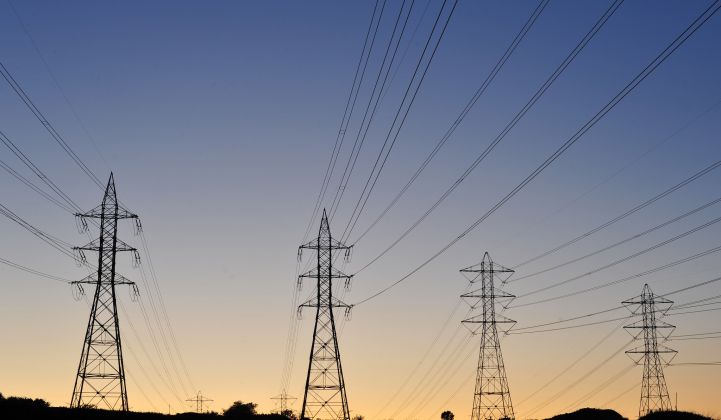More states around the country are investing in non-wires alternatives, distributed energy projects that can substitute for expensive upgrades to distribution infrastructure. Now, a new group hopes to do the same for transmission lines.
A partnership between former Federal Energy Regulatory Commission chairman Jon Wellinghoff and the Center for Renewables Integration argues that distributed energy resources (DERs) should be compensated as transmission assets on the grid.
The concept, called “virtual transmission lines,” centers on using DERs like rooftop solar or battery storage, stepping in when power is needed -- and getting paid for it. Though distributed energy can’t shuttle electrons through a system in the same way traditional transmission lines can, it can help shore up the grid in certain areas so that electricity doesn’t need to be dispatched from elsewhere.
Traditional transmission systems can be overbuilt to ensure reliability, like in the event a substation goes down, and ease congestion to high-demand areas like New York City. The new partnership asserts that because DERs can be used to take some of that load when they’re needed, they should be compensated.
“In the case of a grid failure, they’re there,” said Kerinia Cusick, co-founder at the Center for Renewables Integration. “Because you’ve been recognizing the value they bring to the grid while the grid is up, they provide an added bonus of providing value while the grid is down.”
So far, the partnership asserts DERs have been underutilized as transmission assets because of a lack of information and awareness of how the technology works, as well as a lack of financial backing and technological know-how among potential DER aggregators to bring the idea to bear.
Two FERC orders -- Orders 890 and 1000 -- were meant to make transmission planning more transparent and competitive back in 2007 and 2011, respectively. They require utilities to regionally compare different solutions for transmission load issues and pick the most economically viable. Order 1000 eliminated the right of first refusal, promoting more competition in transmission planning by giving non-incumbents a more level playing field in proposing projects. But to date, Wellinghoff said no DER projects have won a competitive transmission contract.
“Regional grid operators are largely required to evaluate all different technologies on a comparable basis,” said Cusick. “To date, in practicality, that hasn’t really occurred.”
Now that technology and prices have improved for behind-the-meter installs, the partnership hopes to bring clarity to the process, and boost the profile of DERs competing against traditional transmission investments. They plan to publish a paper in November that offers more information to organizations on how they can incorporate DERs in the process.
According to Wellinghoff and Cusick, changing the transmission planning mindset will bring savings for ratepayers and a more resilient grid.
“It’s a benefit to general consumers because it's a competitive way to get transmission services at a lower cost,” said Wellinghoff. “It’s another way for aggregated behind-the-meter battery storage, rooftop solar, demand response, and other assets, to, in essence, have a financeable mechanism by which they can be developed.”
For Wellinghoff, bringing aggregated DERs into the fold of transmission planning fulfills a long-term plan. “We have much more advanced technological solutions that can allow us to aggregate and more effectively control and utilize behind-the-meter resources in ways we didn’t when [Order 1000] initially came out,” he said.
“It was a vision I had at FERC as chairman,” Wellinghoff added. “It’s a vision that now can be realized.”



